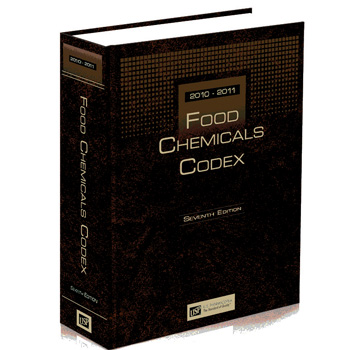The food business is one of the most exciting industries to be a part of today. To address consumer preferences and needs, the food industry needs to continuously develop new products, new processes and new supply chains at a rapid pace. New advances that broaden consumer access to an array of foods seem to come to fruition continuously—from novel sweeteners and salt substitutes to international flavors to the ever-growing category of functional foods and beverages.
Consumers are increasingly demanding—they want tasty food that supports good health, they want seasonal food year-round, they want food incorporating the flavors of the day (yesterday’s pomegranate is today’s açaí), they want food in convenient portions and packaging that suits their busy lifestyles and they want food at low prices, particularly given today’s economic realities. Manufacturers must work hard through innovations, improved processes, business functions and new supply chains to meet these expectations—many of which the manufacturers set themselves through the marketing of their products. Of course, underneath it all, there is the ultimate consumer expectation that goes without saying: that the food available for purchase is safe. However, this may very well be the toughest challenge of all to meet, given the complexities of modern food production, ingredient sourcing and product distribution through long and complex supply chains.
A safe food supply requires several different elements, which have been highlighted quite comprehensively in previous articles. These include regulatory bodies equipped with appropriate resources, ethical manufacturers and suppliers, tightly managed supply chains and the existence of and adherence to independent standards of quality. When we speak of foods, we speak not only of finished food products but also of the various ingredients that comprise these foods—which, of course, can impact overall product safety and quality. As is common wisdom for food producers, it is much easier to control the end-product by ensuring safe ingredients and processes than by testing the end-products for safety.
Focus on Food Ingredients
The U.S. Pharmacopeial Convention (USP), as an independent, standards-setting body, promotes public health by publishing standards for the identity, quality, purity and consistency of food ingredients via the Food Chemicals Codex (FCC) compendium. With these ingredients—such as colorings, flavorings, nutrients, preservatives, processing aids and sweeteners—continuing to play an increasing role in the modern consumer’s diet, ensuring their quality is essential as the industry seeks to assure safety to consumers.
Because we hear far less about food ingredient quality and safety than, say, microbial contamination of fruits, vegetables and meats, the question becomes whether there is actually a need to focus time, energy, expertise and resources to this area. The answer is yes. This has been proven through the problems that have received widespread media coverage over the past few years, such as infant formula and pet food adulterated with melamine—incidents that harmed consumers and pets–caused by the undetected hazard that was intentionally introduced into the food supply chain as an adulterant to a bona fide food ingredient for pure economic gain. This example not only demonstrates clearly the hazard of an unsafe food ingredient, but also the wide segments of consumers and industry that are detrimentally exposed and harmed from such action. Long supply chains contribute further to these crises by making it difficult to directly pinpoint and isolate the source of the problem. The outcome was tragic for the affected consumers and devastating for the industries impacted by it. Therefore, preventing such incidents is a priority not only to safeguard consumers against grievous harm, but also to protect brands and brand names for the industry. Exactly at this junction, where quality defects impact the safety of food ingredients, the quality standards of the FCC are a critical aid to the industry and ultimately to the consumer to ensure the appropriate quality of food ingredients and to maintain trust that our food supply is safe. Beyond these types of incidents, there are other quality issues, which may not garner such extensive attention, but that nevertheless can still be serious. “Quality” takes into account a host of factors: that the ingredient is what it claims to be (identity); that it is not a contaminated, adulterated, diluted or otherwise inferior product; and that it is consistent from batch to batch. These may affect the safety of a product—or may influence the taste or texture of a product or other factors that may not harm a consumer but may result in their rejecting a product or brand. That is something no manufacturer wants.
Focus on Standards—Finding Common Ground
Ingredients are produced around the world, and manufacturers source their ingredients from a host of countries. Global sourcing is a strategy that most manufacturers pursue to minimize costs and to secure a single (or more) source for their global needs. This further ensures that the manufacturer benefits from the economy of size to answer to consumer interest in ever-lower prices. As a consequence, one product could contain ingredients produced in 10 or more countries. This poses a formidable challenge to food manufacturers. What sort of assurance does a manufacturer have that an ingredient is what it claims to be? How does a manufacturer know it is getting what it paid for? Economics are key factors in the food business, but do we need to ask if there is a reason why one source of an ingredient is less expensive than another?
Take extra virgin olive oil. Some estimates conclude that there are not enough olive trees in the world to account for all the purported extra virgin olive oil being sold today. (To improve the situation regarding adulterated extra virgin olive oil in the United States, the U.S. Department of Agriculture recently issued new standards tightening the requirements for the product.) The same goes for pomegranate juice. What this means is that finished product manufacturers—and consumers—may not be getting what they paid for. Some seem to be getting a low-quality product, and the consequences can range from safety concerns to taste, texture or other implications. As we’ve discussed in a previous column,[1] a major incident could result in a recall, and even a comparatively minor episode (e.g., one that impacts taste but not safety) could result in a consumer switching brands or rejecting a product. With fierce competition in the food market, it will be very challenging to bring back those consumers once they have switched brands.
One can also look at the flip side of this scenario. How does an ethical ingredient supplier differentiate itself from other suppliers who may be pushing less-expensive versions of the “same” ingredient that may be of questionable quality? How does an ethical supplier protect itself, its products and the buyers of its products?
This is where independent standards, such as those provided by the FCC, come into play. With the availability of an independent standard to define and assess the authenticity and quality of a food ingredient, suppliers and manufacturers can more easily meet each other’s expectations with regard to critical quality attributes. Manufacturers can demand that their products adhere to an FCC standard, and suppliers can use their adherence to these standards as a means of differentiation. As new ingredients emerge, as pressures to keep food prices low continue and as the globalization of the industry persists, ensuring quality can become very difficult. Independent quality standards can be a key part of supply chain management. Observance of these standards may be used in conducting day-to-day business transactions as part of contracts, for instance. They also may be used for maintaining regulatory compliance in all of those countries that recognize the FCC in law.
Focus on Infant Formula
Infant formula offers an ideal case study on the importance of ensuring quality, for many reasons. First, the margin of error here is very slim given the end consumer is part of a highly vulnerable population. Second, formula is designed to be the only source of nutrition for infants, making it critical that they are receiving all the ingredients and benefits of the product necessary to sustain good health and development. Typically, the infant’s diet is not supplemented elsewhere during this pivotal period. Furthermore, the ratio of food to body weight in infants is significantly higher than in adults. Their undeveloped organs do not possess all the metabolic clearing pathways of an adult, making them much more susceptible to potential health risks. Third, infant formula is an area where consumer trust is absolutely critical; no parent wants to compromise the safety of their children. If a product were to be subject to a recall or any public questioning regarding its quality or even safety, it would be very difficult for a manufacturer to earn back that trust. Fourth, infant formula has undergone various innovations and major improvements over the years, including enhancing the product with specific ingredients such as nucleotides (which are present in higher doses in human milk than in cow-based infant formulas—and are thus routinely added to infant formulas today) and docosahexanoic acid (DHA) and arachidonic acid (ARA) oils. DHA and ARA oils contain essential omega-3 fatty acids present in fish and are frequently added to both infant formula and a host of functional foods for their claimed benefits in maintaining good health and development. As new information has emerged over the years regarding the benefits of these ingredients, parents often consciously select infant formula products that contain these ingredients. Furthermore, supplementing infant formulas with DHA and ARA is supported by the World Health Organization at levels of 0.35% and 0.7%, respectively. U.S. infant formula manufacturers began to offer formulas containing DHA and ARA in 2002.
Quality standards serve an important function here. Consumers deserve to know the product they are feeding their infants contains ingredients that are pure and of high quality—as do manufacturers who seek to provide the best possible product to their customers. In January 2010, USP announced it was proposing new standards for three nucleotides and two DHA oils. The three new nucleotide standards were for disodium 5’-uridylate, 5’-adenylic acid and 5’-cytidylic acid. The new standards for DHA oils were for DHA algal oil, Crypthecodinium type and DHA algal oil, Schizochytrium type. The distinction between the two DHA algal oils is essential as the first can be used in infant formulas as well as for a wide variety of other products considered functional foods; the second is used for functional foods but cannot be added to infant formula. Following a period of public comment in which manufacturers and others were invited to review these draft standards and provide input (as per the public process through which all FCC standards are proposed and reviewed), these standards were subsequently published this past August in a supplement to the FCC, and will become effective November 30, 2010. USP’s monographs also contain all analytical methods necessary and suitable to verify compliance with the monograph’s quality specifications. Additionally, USP offers reference standards (authenticated chemical specimens) for the nucleotides, thus enabling any test laboratory to confirm the correct execution of laboratory procedures used for the verification of the quality specifications. USP thus does not just set quality standards, but also offers all the necessary tools to verify both compliance with such standards and the correct execution of such procedures as demanded in quality systems for test laboratories, such as those required under ISO 17025.
Focus on “The Big Picture”
With infant formula, as with all ingredients, the case for quality standards is compelling. Quality standards serve a unique function. Those provided by the FCC are independent, scientifically developed, public standards, often with associated reference standards. Food manufacturing is global, providing opportunities for good (e.g., expanding consumer access to foods and promoting new nutritional enhancements), but also introducing complexities that can have negative and sometimes catastrophic effects. Consumers can and should expect new innovations, but above all, they expect food to be safe and require food products they can trust. Manufacturers also need assurance that they can trust the ingredients they source (and their suppliers). Additionally, ethical suppliers may require a means to prove their ingredients’ quality. Standards can play a significant role for all these parties, contributing to a better—and safer—food supply.
Markus Lipp, Ph.D., is director of food standards for USP and has 20 years of experience in food and food ingredient issues.
James C. Griffiths, Ph.D., DABT, is vice president of food, dietary supplement and excipient standards at USP and has over 25 years of experience in food, dietary supplement, personal care regulatory and safety issues.
References
1. Lipp, M. and J.C. Griffiths. 2010. Focus on Standards. Food Defense in the Global Environment: The Role of Quality Standards. Food Safety Magazine 16(1): 16-19.
Meeting Consumer Demands While Maintaining a Safe Food Supply

Looking for a reprint of this article?
From high-res PDFs to custom plaques, order your copy today!





